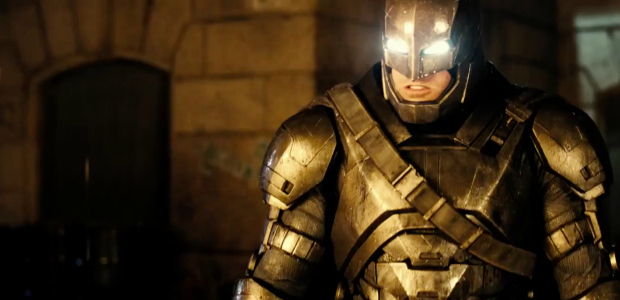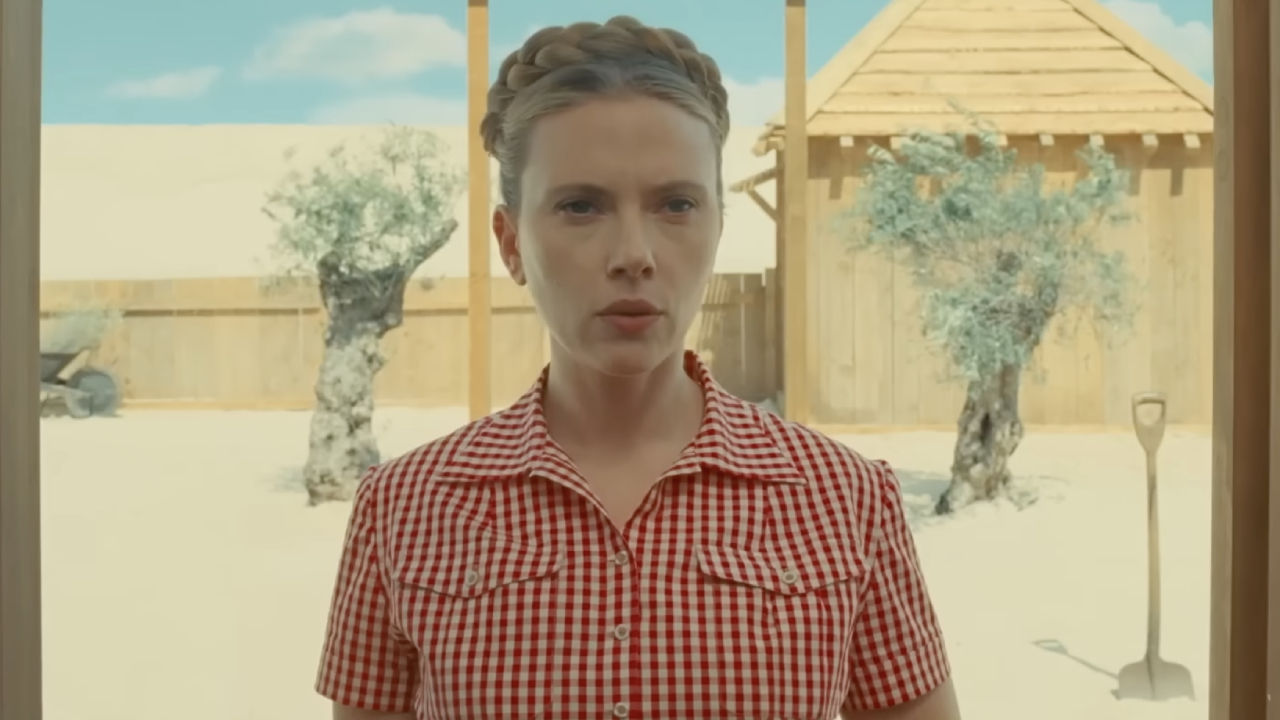Batman v Superman: Dawn of Justice serves many purposes, some more effectively than others. First and foremost, it’s a natural continuation to -- and a significant improvement on -- Zack Snyder’s Man of Steel, a contemporary origin story for the classic Superman character that introduced Henry Cavill as Kal-El, an alien from the planet Krypton whose presence on Earth causes… let’s just say “problems.” Secondly, Dawn of Justice is a stellar Batman movie, differentiating itself from Christopher Nolan’s recent trilogy by casting Ben Affleck as a grizzled, seasoned but burned out Caped Crusader whose primary mission is to strategize against his new adversary, Superman. And finally, Dawn of Justice -- as that subtitle implies – lays the groundwork for future DC Comics movies by sprinkling in recognizable references to members of the Justice League. Nowadays, that’s called “world building,” and it’s essential to forward-thinking movie franchises, even though most of these nods raise questions that aren’t answered here. (So, buy a ticket to one of the many DC Films on the Warner Bros. calendar between now and 2020!)
So much was written, following the controversial conclusion of Man of Steel, about the destruction caused by Superman as he battled General Zod (Michael Shannon). Superman was a relative novice when it came to combat, and he invited chaos before eventually snapping Zod’s neck (another controversial topic). Rather than run from the end of Man of Steel, Snyder and his Oscar-winning screenwriter, Chris Terrio (Argo), embrace it and make Superman’s consequences integral to the action in Batman v Superman. After a brief recreation of Batman’s tragic origin – you know it by heart, the one with the gun, the pearls, the alley and the funeral – Snyder brilliantly opens Batman v Superman in the wreckage of Man of Steel, though this time, we witness it from the viewpoint of Bruce Wayne (Affleck). He’s on the ground in a crumbling Metropolis, and because he’s The God Damn Batman, Wayne springs into action to rescue as many innocent citizens as possible. Batman, a human hero, looks up in the sky and doesn’t see a bird or a plane. He sees a destructive alien force who can wipe out our planet with little to no resistance. So he begins to plan.
Bruce Wayne’s not the only person terrified of Superman. Across town, Lex Luthor (Jesse Eisenberg) has begun pulling various strings behind the scenes to put himself in position to retaliate against Kal-El, if ever the need should arise. Wayne and Luthor simultaneously are racing to acquire a chunk of Kryptonite that was part of the World Engine that landed in the Indian Ocean during Man of Steel. Neither trusts Superman, as his arrival officially has changed the game as far as they knew it.
Sadly, the least interesting character in Batman v Superman is Superman, even though his presence is the catalyst for virtually everything that happens in this story. Terrio’s screenplay spends more time than any other previous Superman film asking relevant questions about how governments of the world would react to the arrival of an all-powerful being like Kal-El. This isn’t the Richard Donner days, where Superman instantly is embraced as a well-intentioned savior, and a symbol of good. This is 2016, and we are a cynical movie-going audience who – like Bruce Wayne – automatically assume that Superman could be a threat, and so must be feared until he can be controlled.
But Superman’s moral quandary isn’t nearly as compelling as Batman’s homicidal paranoia or Lex Luthor’s maniacal manipulations, and the movie’s always more compelling when it spends more time with its newcomers than when it lingers on the Blue Boy Scout. And here, Ben Affleck really plugs in to the suspicion, fear and mistrust that are essential to playing a world-weary Dark Knight, and delivers a spectacular version of the classic comic hero. We know this Batman has suffered numerous hardships. Conversations with his trusted manservant, Alfred (a stoic Jeremy Irons), or glimpses of a defaced Robin costume hint at horrible tragedies from Bruce’s past. But in Superman, Batman sees an enemy he hasn’t figured out how to best. Not yet, anyway. Affleck’s portrayal of Batman is fantastic, and part of the reason why I like Batman v Superman: Dawn of Justice as much as I do. The veteran actor, with experience both as a leading man and as tabloid fodder, now has the gravitas and the life lessons necessary to play both Batman and Bruce Wayne convincingly. He’s excellent casting for the fledgling DC Cinematic Universe, on rock on which Snyder and company can build.
“But these guys eventually fight, right?” I can hear you asking. This is called Batman v Superman, after all. But here’s the best part. Zack Snyder doesn’t rush to the main event, building to it slowly by explaining – from both sides – why a throw down between these DC icons eventually becomes necessary. You’ll have to see it to fully understand why, but I can tell you that the v in Batman v Superman is earned. There’s a reason for their fight, and there’s a winner. That alone is worth the price of admission.
I haven’t mentioned Wonder Woman yet. That’s because she’s superfluous here. Not that Gal Gadot is bad as Wonder Woman. She’s not. It’s also undoubtedly historic to see the legendary DC hero finally portrayed on the big screen in a massive blockbuster. But Gadot’s scenes, either as Diana Prince or as Wonder Woman, are window dressing for the character’s eventual role in Justice League, as well as her own solo movie. You could remove Wonder Woman from this movie and essentially have the same film. That’s neither good nor bad, just a fact. The same can be said for all of the references to the Justice League heroes. There’s an organic way that they are introduced – and one particular scene (probably my favorite in the whole film) hints at what may be a very cool wrinkle in a future film. But they are placeholders, and may frustrate casual fans who don’t get vague references to characters like Cyborg or the villainous Darkseid.
Your Daily Blend of Entertainment News
The distractions of the DC Cinematic Universe are both a blessing and a curse. They’re necessary, as Snyder is setting up more movies with this one film. But they’re also fluff in an already busy story. And that says nothing about the biggest concern with Batman v Superman: Dawn of Justice, though here it’s difficult to address without diving too deep into portions that you don’t want to read. I want to say that if you leave Batman v Superman about 20 minutes before the end credits roll, you will feel a lot better about what Zack Snyder accomplished than if you stay for his chaotic, noisy and wholly unnecessary finale. At the same time, by then, you’ve likely already invested. In for a penny, in for a pound.
You’ve read this far. Allow me to summarize. Batman v Superman improves on Man of Steel by introducing a terrifically effective Batman (the world’s greatest detective actually detects!) and a complicated Lex Luthor, giving us some of the best versions of those characters that we’ve seen on screen for a long while. It’s far from perfect, but it’s largest sins can be overlooked because of the massive feats the blockbuster actually accomplishes, establishing a strong core for future DC movies and immediately making us more confident and far more interested in what Snyder will attempt in his Justice League movies. For now, DC’s cinematic future looks bright.

Sean O’Connell is a journalist and CinemaBlend’s Managing Editor. Having been with the site since 2011, Sean interviewed myriad directors, actors and producers, and created ReelBlend, which he proudly cohosts with Jake Hamilton and Kevin McCarthy. And he's the author of RELEASE THE SNYDER CUT, the Spider-Man history book WITH GREAT POWER, and an upcoming book about Bruce Willis.

